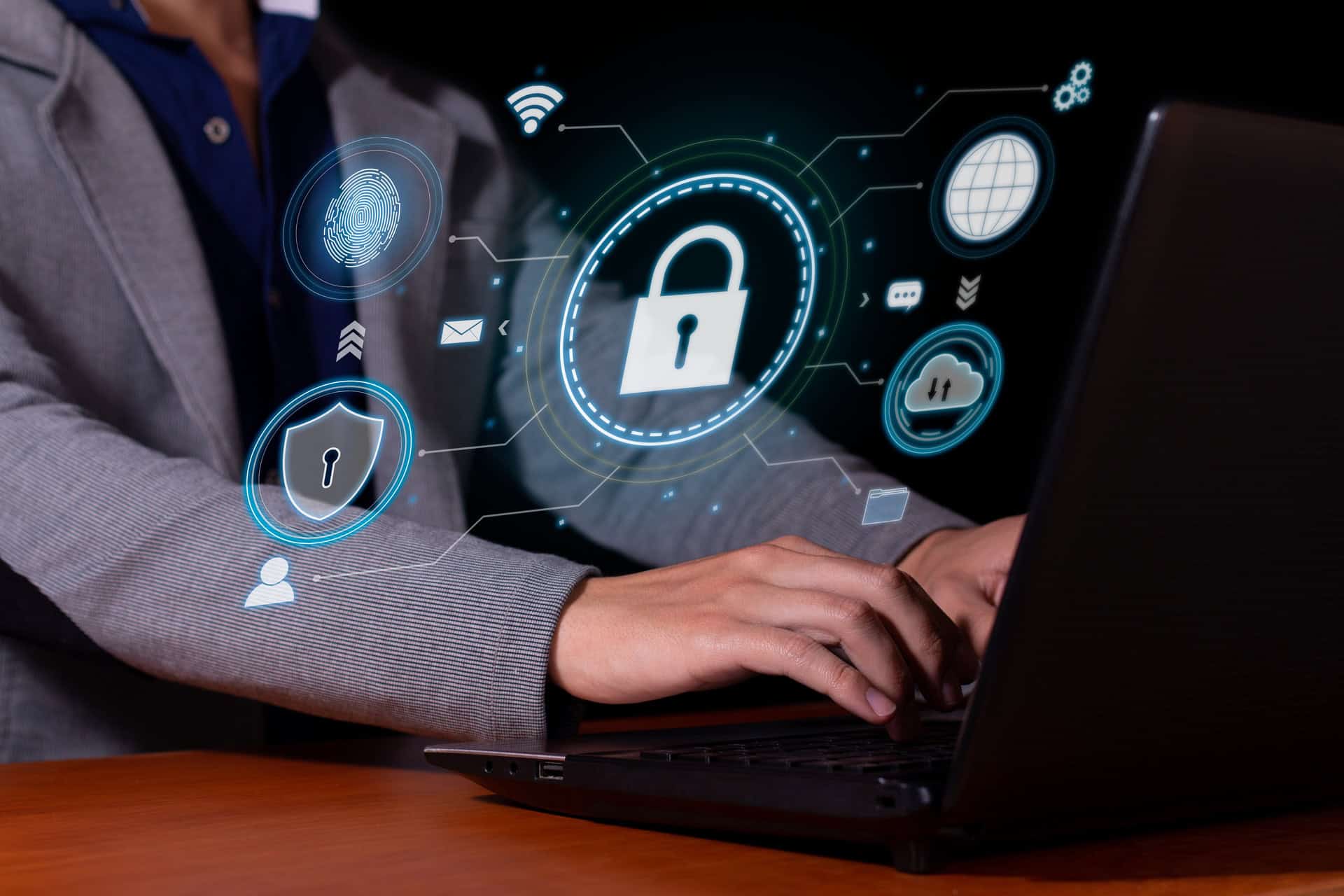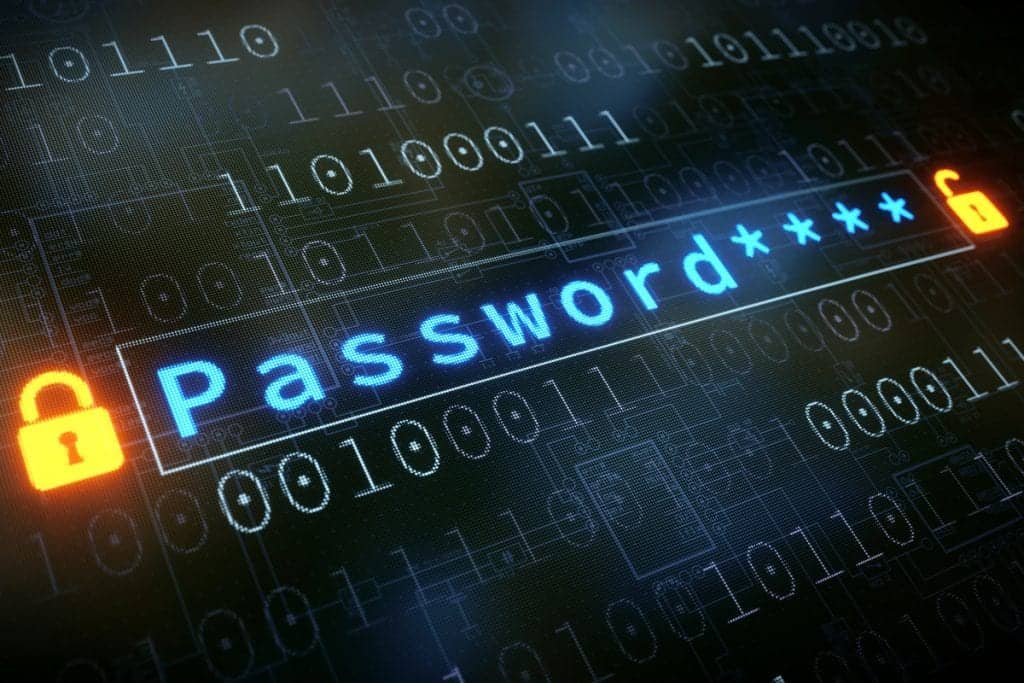These are some of the most effective methods to stop hackers and defend your business against cyber threats:
- Invest in professional cybersecurity solutions
- Enforce strong password security
- Implement multi-factor authentication (MFA) for all accounts
- Keep software and security patches updated
- Use firewalls, anti-virus software, and endpoint protection
- Detect and prevent attacks with security monitoring
- Secure networks and restrict unauthorized access
- Encrypt sensitive data and manage access permissions
- Conduct employee security training and insider threat prevention
- Use email filtering and enforce individual logins
- Conduct security audits and third-party risk assessments
- Create an incident response plan for rapid recovery
If you don’t take the necessary steps to secure your business from hackers, the consequences could be severe. A breach could expose sensitive customer data, lead to financial loss, and damage your company’s reputation beyond repair. Without the right protections, you risk falling victim to increasingly sophisticated attacks, leaving your business vulnerable to long-term harm.
12 Methods on how to protect yourself from hackers
Hackers use advanced tactics to break into business networks, steal sensitive data, and disrupt operations. Protecting your business requires proactive security measures, employee awareness, and continuous monitoring. Below are the most effective methods to safeguard your systems from cybercriminals.
1. Invest in professional cybersecurity solutions
Hackers constantly evolve their tactics, making comprehensive cybersecurity protection essential. Our team provides 24/7 threat monitoring, firewalls, endpoint protection, and real-time security updates to prevent breaches before they happen.
We also help businesses implement data encryption, access controls, and incident response planning to reduce vulnerabilities. With our proactive security measures, businesses can detect and stop cyber threats before they cause damage.
Strengthen your defenses today with our expert cybersecurity solutions.
2. Enforce strong password security
Weak passwords are one of the easiest ways for hackers to gain access to business systems. Every account should use long, complex passwords with a mix of letters, numbers, and special characters.
We help businesses implement enterprise-wide password policies, enforce password complexity rules, and provide password management tools to eliminate weak credentials. Our access control solutions ensure employees only have the permissions they need, reducing unauthorized access risks.
3. Implement multi-factor authentication (MFA)
Passwords alone aren’t enough to stop hackers. MFA adds an extra layer of protection by requiring additional verification, such as a one-time code, biometric scan, or security key.
We help businesses integrate phishing-resistant MFA solutions across all critical accounts, ensuring secure access for employees. Our team also manages MFA policy enforcement and security monitoring to detect suspicious login attempts.
4. Keep software and security patches updated
Outdated software creates security gaps that hackers exploit. Regular updates for operating systems, applications, and firmware patch vulnerabilities and keep systems secure.
Our automated patch management services ensure businesses stay protected without disrupting operations. We also assist with SSL certificate management, web application firewall (WAF) deployment, and malware scanning for an added layer of defense.
5. Use firewalls, anti-virus software, and endpoint protection
Firewalls act as the first line of defense by blocking unauthorized access to networks. Pairing firewalls with advanced endpoint protection software helps detect and remove malware before it spreads.
We provide enterprise-grade firewalls, next-generation anti-virus solutions, and endpoint protection tools to secure business devices. Our intrusion detection systems help detect suspicious activity before hackers can exploit vulnerabilities.
6. Detect and prevent attacks with security monitoring
Cyber threats don’t stop after business hours, and hackers look for vulnerabilities at all times. Continuous security monitoring helps detect unauthorized login attempts, data breaches, and malware activity before they escalate.
We offer 24/7 security monitoring, real-time alerting, and automated threat detection to protect businesses from cybercriminals. Our proactive threat hunting and security audits ensure businesses can identify and mitigate risks before they become attacks.
7. Secure networks and restrict unauthorized access
An unsecured network is a major target for hackers. Businesses should encrypt their Wi-Fi, disable SSID broadcasting, and use WPA3 security standards to prevent unauthorized access.
Not all employees should have full system access. Enforcing least privilege access controls ensures hackers can’t exploit unnecessary permissions. We provide user access audits, time-based administrative accounts, and permission tracking to prevent unauthorized access.
8. Encrypt sensitive data and manage access permissions
Hackers target financial data, customer records, and intellectual property stored on business servers. Encryption ensures that stolen data remains unreadable without the proper decryption keys.
Our enterprise encryption solutions protect data at rest and in transit, ensuring compliance with industry security standards. We also implement full-disk encryption, encrypted email communications, and automatic logout settings to enhance security. Businesses should also regularly review and update access permissions to prevent hackers from exploiting unnecessary user privileges.
9. Conduct employee security training and insider threat prevention
Human error is one of the leading causes of cyber breaches. Without proper training, employees may unknowingly click on phishing links, share sensitive data, or fall for social engineering attacks.
We provide ongoing cybersecurity awareness programs, phishing simulations, and compliance training to educate employees on recognizing hacking attempts. Businesses should also secure physical devices by requiring security key cards, enforcing automatic screen timeouts, and implementing device tracking solutions.
10. Use email filtering and enforce individual logins
Phishing emails remain one of the most effective ways hackers gain access to business systems. Email filtering solutions detect and block fraudulent emails before they reach employee inboxes.
We implement AI-driven email security solutions, anti-spoofing protocols (DMARC, SPF, DKIM), and advanced threat detection to prevent phishing attacks. Every employee should also have a unique login for all applications to prevent unauthorized access. We provide Single Sign-On (SSO) solutions, identity verification controls, and account monitoring to track login behavior and flag anomalies.
11. Conduct security audits and third-party risk assessments
Hackers sometimes target third-party vendors to breach your network. Weak security policies from suppliers or cloud service providers can create backdoor vulnerabilities.
We help businesses audit vendor security policies, enforce third-party compliance, and implement vendor risk management frameworks to close security loopholes. Our team also performs penetration testing and compliance assessments to ensure security controls remain effective over time.
12. Create an incident response plan for rapid recovery
Even with the best security measures, businesses must be prepared for potential cyber attacks. An incident response plan outlines immediate steps to contain breaches, notify affected parties, and restore systems.
We help businesses develop customized incident response strategies, conduct security drills, and maintain secure offsite backups to ensure rapid recovery from attacks. Our disaster recovery solutions ensure businesses can restore operations quickly without paying ransomware demands.
One weak spot is all it takes. Secure your data, systems, and network with expert cybersecurity—Contact us to get started.
How to avoid getting hacked on social media
Social media accounts are integral to modern business, providing a platform for customer engagement, marketing, and brand promotion. However, learning how to prevent cyber attacks is essential, as hackers increasingly target social media profiles to steal sensitive data, impersonate employees, and carry out social engineering attacks.
A compromised business account can lead to reputational damage, financial loss, and unauthorized access to critical business data.
With the increasing sophistication of cyberattacks, safeguarding your social media presence is essential to protect both your business’s online reputation and your customers’ sensitive data.
- Create strong and unique passwords: Ensure your business social media accounts use long, complex passwords that combine letters, numbers, and special characters to make it harder for hackers to guess. Avoid using the same password across multiple accounts to prevent a breach from cascading.
- Implement two-factor authentication (2FA): Enable two-factor authentication on all business social media profiles. This adds an extra layer of security by requiring an additional verification step, such as a code sent to a mobile device or email, before access is granted.
- Avoid public Wi-Fi for logging into social media: Never access your business’s social media accounts over unsecured public Wi-Fi networks. Use a VPN to encrypt your connection and prevent hackers from intercepting sensitive login information.
- Regularly update software and social media apps: Keeping your social media apps, management tools, and any related software up to date ensures security patches are applied, reducing the risk of vulnerabilities that hackers could exploit.
- Educate employees on social media security risks: Regular training should be conducted to ensure that employees are aware of phishing scams, suspicious links, and other social engineering tactics that hackers use to gain unauthorized access.
- Monitor for suspicious activity: Stay vigilant by using monitoring tools that alert you to unusual logins, unauthorized posts, or other activities that may indicate a breach. The quicker a potential hack is detected, the faster it can be contained.
- Limit access to social media accounts: Enforce strict access control policies, ensuring that only authorized personnel have the ability to post, edit, or access sensitive business accounts. Use role-based permissions to limit access based on job function.
- Use encrypted communications: Always encrypt sensitive data shared on social media platforms. Encryption ensures that even if data is intercepted, it cannot be read or exploited by malicious parties.
- Avoid engaging with unverified third-party tools: Be cautious when using third-party apps or services that link to your social media accounts. Only use trusted, secure tools to avoid introducing vulnerabilities through external platforms.
Common ways hackers gain access (attack vectors)
Hackers use a variety of tactics to infiltrate business networks and steal sensitive information. Below are the most common attack vectors businesses face and how hackers exploit vulnerabilities to gain access.
- Phishing scams (email, SMS, social engineering): Phishing is one of the most common ways hackers gain access to a company’s network. By impersonating trusted entities, they trick employees into clicking malicious links or sharing login credentials. Social engineering tactics, like pretexting or baiting, further manipulate employees into unknowingly assisting the attacker.
- Malware (viruses, ransomware, spyware): Malware is software designed to infiltrate, damage, or steal data from a computer or network. Ransomware locks files and demands a ransom for their release, while spyware secretly monitors activity, often to steal sensitive data. Viruses can spread throughout systems, allowing hackers to gain control or exfiltrate information.
- Weak passwords and credential stuffing: Weak passwords are often the first entry point for hackers. When employees use easily guessable passwords or reuse them across multiple accounts, it makes it easier for hackers to gain access. Credential stuffing attacks use stolen credentials from previous breaches to try logging into multiple accounts automatically.
- Public Wi-Fi vulnerabilities: Using unsecured public Wi-Fi networks exposes business data to potential attacks. Hackers can intercept sensitive data or launch man-in-the-middle (MITM) attacks, where they access communications between devices and servers. It’s important to use VPNs to encrypt data when connecting to public networks.
- Zero-day exploits in software: A zero-day exploit takes advantage of vulnerabilities in software that have not yet been discovered or patched by the vendor. Once hackers find these vulnerabilities, they can exploit them before a fix is released. These attacks are especially dangerous because they happen before the software provider has a chance to respond.
- Insider threats (disgruntled employees, third-party access): Employees or contractors with access to sensitive information can either intentionally or unintentionally cause harm. Whether it’s through negligence or malicious intent, insider threats can be difficult to detect, as they frequently have trusted access to internal systems.
- Unpatched software and hardware vulnerabilities: Hackers regularly exploit known security flaws in software or hardware that haven’t been updated. If a business fails to regularly apply security patches or upgrades, cybercriminals can gain unauthorized access and take advantage of these known weaknesses.
Real-world hacking incidents & lessons learned
Real-world cyberattacks provide valuable insights into how hackers gain access and the mistakes organizations make that lead to breaches. Below, we explore some high-profile hacks, the common mistakes that facilitated the breaches, and the lessons businesses and individuals can learn from these incidents.
Examples of high-profile hacks:
- Equifax (2017): One of the largest data breaches in history, affecting 147 million Americans. Hackers exploited a vulnerability in Apache Struts software that Equifax had failed to patch. Personal information, including Social Security numbers, was compromised.
- Colonial Pipeline (2021): Hackers, using ransomware, targeted Colonial Pipeline’s systems, shutting down fuel distribution along the U.S. East Coast. The attack was initiated through a compromised VPN password and caused massive disruptions.
- Yahoo (2013-2014): Hackers gained access to 3 billion Yahoo accounts, exploiting weak encryption and poor security practices. The breach was discovered years after the fact, leaving many customers unaware of their exposed data.
Common mistakes that led to the breach:
- Failure to apply security patches: In the Equifax breach, hackers took advantage of an unpatched vulnerability that had been identified months before the attack. Regular patching and vulnerability management could have prevented the breach.
- Weak or stolen credentials: In the Colonial Pipeline incident, attackers gained entry using weak or compromised login credentials. Organizations should use strong authentication methods and multi-factor authentication (MFA) to protect access points.
- Lack of employee training: Phishing emails were a key method for gaining access in many high-profile breaches, such as the Yahoo breach. Failing to train employees to recognize and report phishing attempts left companies vulnerable.
- Inadequate network segmentation: Both Equifax and Colonial Pipeline lacked effective segmentation between critical systems and external access points. If systems had been properly segmented, the attackers would have had more difficulty spreading through the networks.
Key takeaways for businesses and individuals:
- Timely updates and patch management are critical: Security patches must be prioritized and applied as soon as they are released to prevent exploitation by hackers.
- Strong passwords and MFA are essential: Relying solely on weak passwords or reused credentials is an open invitation for attackers. Multi-factor authentication adds an extra layer of defense.
- Employee awareness and training can prevent breaches: Regularly educating employees on the dangers of phishing, social engineering, and safe online behavior is one of the best defenses against attacks.
- Network segmentation minimizes damage: Dividing networks into smaller segments ensures that, even if one system is compromised, hackers can’t easily move across the entire network.
Hackers are always looking for vulnerabilities. Stay ahead of cyber threats with proactive security solutions and contact us to protect your systems.
Signs you’ve been hacked & what to do next
Detecting a cyber attack early can help minimize the damage caused by hackers. Below are the indicators of a compromised account and the immediate actions you should take to secure your data and systems.
Indicators of a Compromised Account
- Unexpected password reset emails: If you receive an email about a password reset request that you didn’t initiate, it could indicate that someone is trying to gain access to your account.
- Suspicious login locations: Unfamiliar login locations or devices appearing in your account history are red flags that someone might be accessing your account without permission.
- Slow or crashing devices: A sudden slowdown in performance, frequent crashes, or strange behavior on your devices can be signs of malware or spyware running in the background, compromising your system.
- Strange email forwarding or auto-replies: If your email account is compromised, hackers may set up forwarding rules to capture incoming messages or send auto-replies. Be sure to check your email forwarding settings regularly to ensure no unauthorized changes have been made.
Immediate Actions to Take
- Reset passwords: Immediately change the passwords for any affected accounts and any other accounts that share similar credentials. Use a strong, unique password for each account and enable multi-factor authentication (MFA) to add another layer of protection.
- Check login history: Review the login history and look for any suspicious or unauthorized activity. Most platforms allow you to view active sessions or devices that are logged in, which can help identify if your account has been accessed by someone else.
- Run antivirus scans: Run a full system scan using reputable antivirus software to detect and remove any malicious software that may have been installed on your devices. Make sure your antivirus software is up-to-date.
- Report suspicious activity: If you identify any suspicious activity, report it immediately to the platform’s support team or security team. This will help them investigate and potentially prevent further damage. Additionally, if sensitive business data has been compromised, inform affected parties, including customers or partners, as per data protection regulations.
- Monitor financial accounts: If sensitive financial data is involved, such as in a banking or payment system breach, monitor transactions closely. Look for unauthorized purchases or transfers and alert your bank or financial institution immediately.
- Update security questions: If your accounts use security questions for password recovery, hackers may change them as part of the breach. Review and update your security questions to ensure they are not easily guessable by others.
- Disconnect compromised devices: If you suspect that a particular device is compromised, disconnect it from the network to prevent further access to your accounts or systems. This can prevent hackers from moving laterally across your network.
- Review third-party app access: If you use third-party applications that integrate with your accounts, hackers may gain access through these apps. It’s important to revoke access to any unrecognized third-party apps and review their permissions regularly.
- Consider contacting cybersecurity experts: If the breach involves sensitive company data, I recommend contacting cybersecurity experts to conduct a thorough audit and help identify any vulnerabilities that were exploited. They can provide guidance and ensure that your business is fully secured.
- Check for unauthorized changes in account settings: Hackers often make changes to account settings, such as modifying email notifications, security preferences, or even altering the personal information associated with the account. Review account settings after a suspected breach to look for any changes you didn’t authorize.
Taking quick and decisive action when you suspect a breach can help minimize the damage and restore control over your accounts. Our cybersecurity solutions can help you prevent future breaches and enhance your business’s overall security posture.
The future of hacking: emerging cyber threats
As technology evolves, so do the methods hackers use to infiltrate networks and steal data. Here are some of the most dangerous emerging cyber threats that businesses need to be aware of in the near future.
- AI-powered phishing attacks: Hackers are leveraging artificial intelligence (AI) to create more realistic and convincing phishing attacks. AI can be used to automate the creation of personalized phishing emails, making them harder to detect and more likely to deceive individuals into clicking on malicious links or sharing sensitive information.
- Deepfake scams: Deepfake technology uses AI to create hyper-realistic fake videos and audio, allowing cybercriminals to impersonate executives or employees. These scams are often used to manipulate individuals into transferring funds, disclosing confidential information, or taking unauthorized actions.
- Quantum computing threats: Quantum computing has the potential to break existing encryption methods, posing a major threat to data security. While still in the early stages of development, quantum computers could soon be capable of cracking encryption algorithms that are currently considered secure.
- IoT device vulnerabilities: The increasing number of internet-connected devices (IoT), from smart thermostats to industrial machinery, provides hackers with more entry points into business networks. These devices often have weak security, making them easy targets for exploitation and potentially compromising sensitive data.
- Supply chain attacks: Hackers are increasingly targeting third-party vendors as a way to gain access to larger networks. By compromising a supplier or partner, attackers can access internal systems and steal data or implant malware without the company even realizing it.
- Ransomware-as-a-Service: Ransomware attacks are becoming more accessible to cybercriminals due to the rise of Ransomware-as-a-Service (RaaS). These services allow even non-technical hackers to carry out sophisticated ransomware attacks, further increasing the prevalence and danger of this cyber threat.
- Cloud security risks: As businesses continue to migrate to the cloud, security gaps in cloud infrastructure present new vulnerabilities. Hackers are targeting misconfigured cloud storage or exploiting weak cloud access controls to steal sensitive business data or hold it for ransom.
Use CMIT Solutions for protection against hackers
In an era of evolving cyber threats, protecting your business from hackers requires a multi-layered approach. At CMIT Solutions, we offer comprehensive cybersecurity services designed to safeguard your data, prevent breaches, and mitigate risks associated with hacking. From advanced threat detection to incident response planning, our team uses state-of-the-art technology to stay ahead of emerging threats like AI-powered phishing, ransomware, and insider attacks.
We specialize in network security, multi-factor authentication (MFA), endpoint protection, and continuous monitoring, ensuring your systems are always secure and your business remains operational. Whether you’re looking to protect sensitive client data or defend against malware, our tailored cybersecurity solutions are designed to address the unique needs of your business.
With CMIT Solutions, you get the expertise and resources needed to combat today’s complex hacking risks and prepare for tomorrow’s threats.
Protect your business from hackers today—call (800) 399-2648 or contact us to book a consultation and get started.
FAQs
What is the best defense against hackers?
The best defense against hackers is a multi-layered cybersecurity strategy. This includes using strong passwords, implementing multi-factor authentication, regularly updating software, and training employees to recognize phishing attempts. Ensuring cybersecurity compliance is vital for ongoing protection.
How do hackers avoid being tracked?
Hackers often use anonymous networks, such as VPNs and Tor, to mask their location and identity. They may also use encrypted communication tools to avoid detection and cover their tracks. By constantly shifting IP addresses and using fake credentials, hackers stay difficult to trace and track.
What do hackers target most?
Hackers primarily target sensitive data such as personal information, financial records, and login credentials. They also focus on business critical systems like customer databases or cloud storage. Any vulnerabilities in these areas can be exploited to gain unauthorized access or launch ransomware attacks.
How do hackers choose who to hack?
Hackers often target businesses with weak security measures, outdated software, or those with valuable data to steal. They may also focus on companies with poor cybersecurity compliance, lacking strong firewalls or employee training. Small and medium-sized businesses are often vulnerable targets due to limited security resources.





